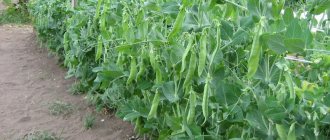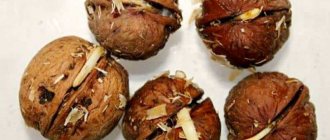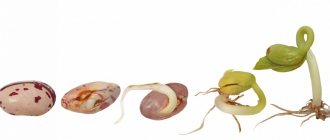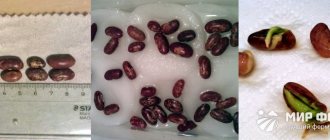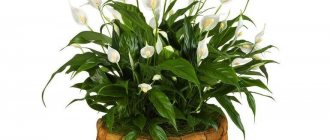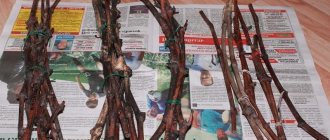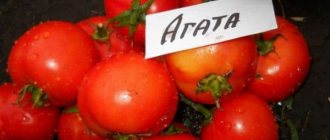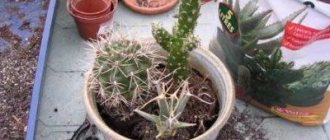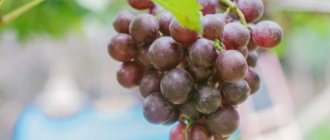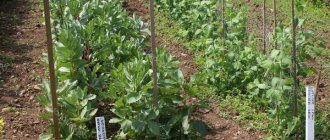Peas, plant description
This is an annual herbaceous plant, the genus of which is divided into seven species.
Characteristic features include:
- Weak, curly shoots that often need support;
- At the ends of the branches there are tendrils, due to which they are attached to supports and white flowers, which are subsequently transformed into pods;
- It can reach from half a meter to one and a half meters in height;
- The fruits are represented by small peas, which on average reach 0.5 cm. From five to ten peas can be collected in one pod;
- The fruits contain a large amount of beneficial vitamins of groups A, B, C, macro- and microelements and sugars.
The large amount of nutrients that are part of its fruits make this legume representative healthy.
In particular, it has a beneficial effect on the functioning of the cardiovascular and digestive systems.
Sprouted peas intended for eating
Peas
Of all legumes, peas require the most time to germinate: 12-13 hours for soaking + at least 20-24 hours for germination itself.
How to plant peas in one bed
The popularity of sprouted peas is due to a large number of beneficial properties, as well as a delicate and unusual taste. Sprouted fruits have a nut-like taste.
Why germinate seeds if peas can be eaten fresh? The fact is that it is in this form that peas have a high protein content, which can be obtained at any time of the year, including in the winter months. Sprouted peas contain about 80 nutrients that have an extremely beneficial effect on the human body.
And it doesn’t matter what month on the calendar: December, February or September. With the right approach to this issue, pea sprouts will quickly grow.
Important! Sprouted peas are a valuable source of protein that is comparable to dairy and meat products, without the saturated fat and high calories found in dairy and meat products.
How to sprout peas for a raw food diet
In a raw food diet, both young peas and their sprouts are used.
In order to get the latter at home, no effort is required, you must:
- Wash the dried peas thoroughly and place them in a deep container;
- Cover with gauze and fill the container with water at room temperature. In this case, it is important that there is several times more liquid than seeds;
- Place the soaked seeds in a warm place, away from the sun, for twelve hours;
- After this, rinse the seeds and return them to the container, covering them with gauze. After this, keep it in water for 24 hours, changing it every four hours;
- Sprouts appear within a day and a half. Suitable for consumption are those that have reached 2-5 mm;
- The resulting sprouts can be stored in a tightly closed container under damp gauze.
They remain suitable for consumption for five days, but it is recommended to wash the sprouts from mucus from time to time, and it is recommended to blanch them before eating.
It is not recommended to store sprouted seeds for more than five days. Consumption of such sprouts will not be beneficial for the body.
Let's watch a video on how to germinate peas at home:
Germination for planting in the garden
The key to getting a good harvest in the garden will be the use of high-quality planting material, which is sorted, then properly soaked and germinated. Also, gardeners with more than 10 years of experience recommend pre-treating planting material with a nitrogen-fixing inoculant. The agrochemical necessary for germination can be easily purchased in most specialized stores; however, you should act solely according to the instructions on the packaging of the drug, which tells you whether such a chemical can be used and how to prepare a solution for treatment.
Direct germination of pea seeds before planting is carried out using the following technology:
- Peas treated in the inoculant should be distributed on a paper towel, which is folded four times and moistened generously.
- A wet, folded towel is placed in a perforated plastic bag, which is lightly tied with an elastic band or the neck is tied in a knot.
- The bag with seeds is placed in a warm, well-lit place with sunshine with a temperature of 18-20 degrees.
- From time to time, you should moisten the bag and paper towels using a spray bottle.
- As soon as the first barely noticeable 1-2 mm roots appear, you can carefully plant them in the garden in beds or small pots.
The technology of growing peas at home is popular, for which the sprouted seeds are carefully planted in flower pots with fertile soil purchased or prepared independently. All that needs to be done next is to arrange a small suspension for the growth and development of this climbing plant.
Pea sprout recipes
Seed sprouts can be served on the table as an independent dish or as an additive.
However, it is important to consider several rules for their consumption:
- It is recommended to eat sprout dishes in the first half of the day, preferably for breakfast;
- It’s better to start with a few pieces, gradually increasing to one hundred grams;
- Consumption of sprouts must be interrupted for a short break.
In order to bring variety to the table, people have come up with many recipes and unexpected combinations of sprouts with other products.
Particularly notable ones include:
- A paste that can be prepared by mixing sprouts, zucchini and garlic. Sesame seeds with a few drops of lemon juice or olive oil add special piquancy;
- Sprout juice has a whole range of nutrients, which makes it not only an original, but also an extremely healthy dish;
- Sprout salads can be very diverse. You can season the sprouts in a salad with cucumbers, tomatoes, and radishes. In fact, they go well with any vegetable salad.
In addition to the additive in its raw form, it is practiced to grind the sprouts in a blender and then add the mixture to porridge or pie filling.
Such an experiment not only adds originality to any dish, but also enriches the body with useful elements.
Beneficial properties for men and women
Sprouted peas, like many legumes, can be harmful to the body, but the benefits when used correctly are immeasurable. By adding a herbal product to the diet, the following improves:
- digestion;
- blood composition;
- metabolism;
- immunity;
- balance of acids and alkalis;
- condition of the skin, hair, teeth and nails.
The plant is also capable of removing waste and toxins from the body. Sprouts stimulate sexual activity in men and women. The plant also reduces the risk of prostate development.
People who include this herbaceous plant in their diet become more attentive, energetic and focused.
Important! Because of this effect, the product is recommended to be consumed in the morning. The product serves as a preventative against many diseases.
The plant helps increase resistance to diabetes and improve immunity. Pea sprouts also prevent the formation of cholesterol blockages in blood vessels. Thanks to the complex carbohydrates contained in the plant, it is easy to get enough of it. At the same time, the product does not increase blood sugar levels.
But pea sprouts can bring not only benefits, but also harm to the body if consumed in immeasurable quantities. If you have diabetes, such experiments are unacceptable, so before introducing this product into your diet, you should consult your doctor.
The plant is actively used in folk medicine in our time. Various tinctures and medicines for various diseases are created based on green pea sprouts. But most often these are drugs for the treatment of kidney and skin diseases.
Benefits and harms of the product
It is difficult to overestimate the benefits of legumes for the human body.
The main positive qualities of these products include:
- Rich content of nutrients and minerals (proteins, amino acids, calcium, magnesium, phosphorus);
- A large amount of zinc in sprouts stabilizes the functioning of the prostate gland, which is especially important for men;
- Optimization of the functioning of the digestive and cardiovascular systems;
- Increasing the defense capacity of the immune system;
- During pregnancy, consumption of legumes helps alleviate the unpleasant symptoms of toxicosis;
- Improving the condition of skin and hair.
However, it is important to consider that along with the positive aspects, consuming legumes also has negative aspects.
So it is recommended to pay special attention to some problems in which the consumption of legumes is undesirable:
- Diseases of the large intestine are a direct contraindication to the consumption of legumes;
- Acute gastritis and nephritis;
- Peptic ulcers of the stomach and duodenum;
- Urolithiasis disease;
- Gout;
- Old age and children - sprouts are poorly digested and lead to excessive gas formation in the intestines.
Peas have a rich chemical composition, due to which their consumption has a beneficial effect on the body. However, before introducing it into the menu, it is recommended to make sure that it will be well received by the intestines.
Secrets of Mother Nature
In the category of legumes, peas are the most valuable plant product. In terms of its composition, it stands out among its fellows with an increased amount of useful macro and microelements, proteins, and carbohydrates.
Nutritionists recommend using it for food for people suffering from:
- Anemia;
- Anemia;
- Diabetes;
- Tuberculosis;
- Overweight.
However, sprouted peas can still bring the greatest benefit to a person. Today it is the most functional food product that allows you to replenish the human body with valuable biologically active:
- Enzymes;
- Antioxidants;
- Fiber;
- Phytohormones;
- Polysaccharides;
- Pectins;
- Proteins of plant origin.
Unlike dried peas, its three-day-old sprouts are a biogenic product with a natural component, where the amount of water-soluble enzymes that are synthesized from inactive growth substances of the embryos is ten times higher.
They are natural catalysts that break down all the complex nutrients of traditional dry grains into simpler ones. At the same time, due to the breakdown of high molecular weight biopolymers, low molecular weight soluble substances are obtained that are easily absorbed and digested by our body.
Growing Patio Peas as a Houseplant
Patio peas are early ripening varieties. Quite compact and easy to care for, it will decorate any windowsill with lush greenery.
To grow you need:
- Prepare the container in advance, fill it with light, fertile soil;
- Place the seeds in a damp cloth or saucer with water for germination. The first roots can be observed within a day;
- After the roots have formed, plant the seeds;
- It is recommended to place the container on the southeast windowsill;
- It is important not to forget about the need to systematically loosen the soil;
- Water as the substrate dries.
Legumes do not require care and the only thing worth paying attention to is watering. Stagnation of water leads to rotting of the roots, which completely destroys the plant.
On how to grow Patio peas indoors, watch an interesting video:
Reviews from gardeners
Olga
This year I tried to grow peas on a windowsill, and surprisingly, two bushes bore fruit well, and caring for such plants is not difficult. Before starting work in the garden, I read what conditions are needed for seed germination. I planted the early variety Vera, literally 45 days after the first seedlings appeared, I was able to collect ripe pods. Next year I plan to enlarge this improvised bed on the windowsill and plant about 10 plants.
Victor
My wife and I are experienced gardeners; we have been growing various plants and fruits in our garden for more than 20 years, so we know very well what is needed for seed germination. This year we started planting the Alpha variety. This is the best early ripening variety that bears fruit well and has excellent taste. Plant care is standard: they require watering, fertilizing and staking the vines on trellises. We planted about 10 bushes, the harvest was enough for us and the children.
Maria
For us, a dacha is more of an opportunity to relax than to grow various vegetables and fruits here. Therefore, if we plant something in the garden, then at a minimum. This year I planted about a dozen plants near the fence, pre-soaked and germinated the seeds. I had to study what conditions are necessary for seed germination. This is an easy-to-care crop that allows you to get an excellent harvest. I used to grow sweet varieties, but now I tried the shelling varieties. There are no differences in care, but the taste of ripe peas is significantly different.
Dmitry Igorevich
At my dacha I have dozens of varieties of peas. Caring for such plantings is not difficult, you just need to know how to germinate peas. The gardener will be able to grow sweet and tender peas, as well as shelling varieties, which are denser and intended for making soups and canning. I can recommend this crop to all novice summer residents and gardeners, even with minimal care, you can get a wonderful harvest on your personal plot.
How to germinate peas at home for planting
Growing at home is quite simple, but you should pay attention to some nuances. To begin with, it is recommended to choose the right container.
The pots are suitable, but too much moisture accumulates in them, which negatively affects the fruit.
Cups are also not the best option, since the plant will have to be picked later. It is optimal to plant seeds in separate containers or boxes.
After the container has been selected, it is recommended to pay attention to the selection of soil. Garden soil is suitable, but first you need to prepare it, destroy harmful microorganisms that lead to plant diseases and its subsequent death.
To prevent possible unpleasant consequences, it is enough to treat the soil with boiling water and dry it. It is recommended to hold the event several weeks before the actual landing.
The sowing time depends on the variety, but you shouldn’t get too attached to it. Peas bear fruit not only in open substrate, but also on the windowsill.
It is recommended to plant seeds that have been germinated in water in advance, planting them to a depth of several centimeters with a distance of up to ten centimeters between each seed.
After the seeds are spread out, they are sprinkled with soil and covered with film. After the sprouts appear, the film can be removed.
Germinating peas for planting in open ground
Do I need to soak peas before planting in open ground?
Much depends on the conditions in which the peas will grow, but the most important thing is the correct selection and preparation of planting material for the upcoming planting in open soil. Proper selection of seeds will provide the necessary conditions for obtaining a rich and high-quality harvest. In addition, the procedure allows you to speed up and simplify the germination process.
Important! The seed material must be sorted manually, removing all damaged and non-standard specimens.
Before you start germinating legumes, you need to find out how to properly soak the seed material. This is extremely important for the successful cultivation of the plant.
Discussions about whether it is necessary to germinate pea seeds before planting in the ground do not make much sense. Despite the existence of an alternative opinion, most experienced gardeners carry out this procedure in the spring without hesitation.
Seed planting procedure
Prepared pea seeds are planted in a common container, wide and shallow. If you immediately provide each of them with an individual large container, there is a high risk of soil acidification and the development of rot. In principle, planting in plastic cups or peat pots is acceptable, but then picking will still be required. The pea root system simply does not have enough space.
There is nothing complicated about the landing procedure itself. They operate according to the following algorithm:
- The containers are filled with disinfected soil, watered moderately and leveled. There should be 3–5 cm left to the edge of the container. If there are no drainage holes, you must make them yourself. Drainage is desirable at the bottom - a layer of fine expanded clay, crushed stone, pebbles, brick chips about 2 cm thick.
- The seeds are sown in furrows about 2 cm deep. The interval between them is 5–7 cm. The row spacing is 7–8 cm. The peas are placed with the sprout down. The grooves are sprinkled with soil without compacting it. Then the soil is moistened again by spraying from a spray bottle. The container is covered with glass or a piece of polyethylene, turning it into a greenhouse. Peas do not need light until seedlings emerge. However, regular watering is required as the top layer of soil dries out and daily ventilation is required. It is enough to remove the cover for 10–15 minutes to get rid of accumulated condensation.
- After the seeds germinate, the cover is removed. The crop is provided with the required duration of daylight, either naturally or artificially. The optimal temperature is 18–20ºС. Regular watering is still important. Do not let the soil dry out. About a week after emergence, the first fertilizing is carried out by watering the peas with a solution of simple superphosphate (2-3 g per liter of water).
- In the phase of the second true leaf, the seedlings dive. They are placed in separate containers with a volume of 0.3–0.5 liters. You can again use one common box, but it must be large enough. The optimal distance between plants is at least 5 cm. The soil is used the same as for germinating seeds. They are removed from the old container along with a lump of earth on the roots, trying to minimize its integrity.
- Seedlings are planted in holes about 5 cm deep.
- For 4–5 days after picking, peas are kept in partial shade, protected from direct sunlight.
- Seedlings that have reached a height of 12–15 cm are tied to a support if necessary.
Planting and caring for peas
Peas love the sun. Therefore, it needs to be planted in a sunny place, preferably protected from the wind.
The bed for planting must be prepared in the fall. To begin with , dig to the depth of the fertile layer (22-25 cm). You can fill the soil with compost and ash, or superphosphate and potassium salt.
In the spring, we cultivate the bed as early as possible: loosen the soil to a depth of about 10 cm. Add ash and 10-15 g of urea per 1 sq.m. to the soil. The latter can be replaced with 20-25 g of ammonium nitrate.
Pea grains can be sown quite early - starting from the 20th of April. Early ripening varieties can be planted until mid-summer (approximately July 10).
The day before planting, the bed needs to be leveled and watered thoroughly. Immediately before planting, water the soil again. We will plant the peas to a depth of 4-6 cm. The distance between the rows should be at least 20 centimeters. Every 8-10 cm we plant two peas at once, or one every 4-6 cm. We cover the holes with peas with earth and compact them a little.
Until the seedlings appear, the bed can be covered with film to protect the seeds from birds and retain moisture and warmth. With the first shoots, the film must be removed.
The first shoots should appear 6-15 days after planting.
Caring for peas is not difficult. The main thing is regular watering, weeding and timely harvesting. A separate item that peas need is support. As peas grow, they need something to cling to to keep them from falling to the ground.
Building a support is very simple. We insert pegs 1-1.5 m high into the ground. The distance between the pegs can be 50-100 cm. Between them we stretch a large mesh or several rows of rope to form a “fence”. Our peas will wrap around it.
Depending on the variety, peas begin to bloom 30-60 days after planting. A month after this, you can harvest the first harvest.

